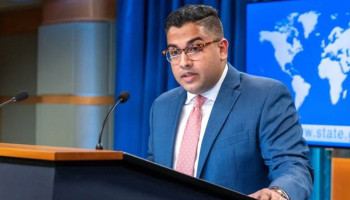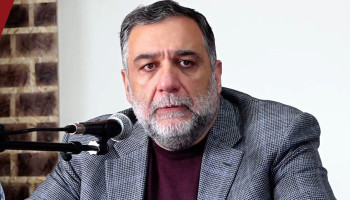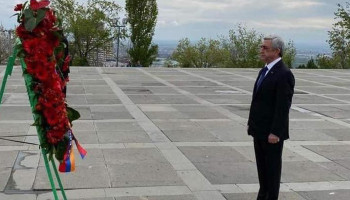
Hundreds of civilians have been killed by airstrikes inside their homes or in places where they sought refuge after following Iraqi government advice not to leave during the offensive to recapture the city of Mosul from the armed group calling itself Islamic State (IS), said Amnesty International. Survivors and eyewitnesses in East Mosul said they did not try to flee as the battle got underway because they received repeated instructions from the Iraqi authorities to remain in their homes.
The shocking spike in civilian casualties from both US-led coalition airstrikes and ground fighting between the Iraqi military and IS fighters in recent months has also raised serious questions about the lawfulness of these attacks. In one of the deadliest strikes in years just days ago on 17 March 2017, up to 150 people were reported killed in a coalition airstrike in the Jadida neighbourhood of West Mosul, eventually leading the coalition to announce that it is investigating the incident.
“Evidence gathered on the ground in East Mosul points to an alarming pattern of US-led coalition airstrikes which have destroyed whole houses with entire families inside. The high civilian toll suggests that coalition forces leading the offensive in Mosul have failed to take adequate precautions to prevent civilian deaths, in flagrant violation of international humanitarian law,” said Donatella Rovera, Senior Crisis Response Adviser at Amnesty International, who carried out field investigations in Mosul.
“The fact that Iraqi authorities repeatedly advised civilians to remain at home instead of fleeing the area, indicates that coalition forces should have known that these strikes were likely to result in a significant numbers of civilian casualties. Disproportionate attacks and indiscriminate attacks violate international humanitarian law and can constitute war crimes.
“The Iraqi government and the US-led coalition, must immediately launch an independent and impartial investigation into the appalling civilian death toll resulting from the Mosul operation.”
Fleeing the city ahead of the fighting was also extremely difficult for residents of Mosul, as IS militants routinely punished and at times killed those caught trying to leave. Wa’ad Ahmad al-Tai, a resident of the al-Zahra neighbourhood of East Mosul, was among many civilians who followed Iraqi government advice to stay put.
“We followed the instructions of the government who told us ‘stay in our homes and avoid displacement’. According to the instructions, residents who had nothing to do with Daesh [IS, in Arabic] should stay in their homes... We heard these instructions on the radio… Also leaflets were dropped by planes. This is why we stayed in our homes,” he said.
As the fighting intensified Wa’ad Ahmad al-Tai, his brother Mahmoud and their families sought shelter at their other brother’s two-storey home hoping it would offer them more protection.
“We were all huddled in one room at the back of the house, 18 of us, three families. But when the house next door was bombed, it collapsed on us, precisely over the room we were sheltering in. My son Yusef, nine, and my daughter Shahad, three, were killed, together with my brother Mahmoud, his wife Manaya and their nine-year-old son Aws, and my niece Hanan. She was cradling her five-month-old daughter, who survived, thank God,” he said.
Hind Amir Ahmad, a 23-year-old woman who lost 11 relatives, including her parents, grand-parents and four young siblings, in a coalition airstrike in East Mosul, described the fatal attack on 13 December 2016 to Amnesty International:
“We were sleeping when the house literally collapsed on us. It was a miracle none of us was killed. We ran to my uncle’s house nearby. At about 2pm that house too was bombed and collapsed on us… almost everyone in the house was killed – 11 people. My cousin, two aunts and I were the only ones who survived. Everyone else died. It took us six days to find only pieces of their bodies, which we buried in a mass grave in a field nearby... I don’t know why we were bombed. All I know is that I have lost everyone who was dearest to me.”
In another air strike, 16 people were killed in three adjacent houses in the Hay al-Mazaraa district of East Mosul on 6 January 2017. Survivors and neighbours told Amnesty International that in so far as they knew, no IS fighters had been present in or around the house. Among the victims were the three children and the mother of Shaima’ Qadhem, who had been arrested and killed by IS the previous year. Ahmad, a relative of the victims, told Amnesty International:
“This family was targeted by all sides. Last year Daesh arrested and executed the children’s mother and now the children themselves were killed by a coalition bombing. Civilians got trapped in this war and no one helped them. When I tried to leave Mosul with my family, we were caught by Daesh. They were going to pour petrol over us and burn us. In the end we managed to escape death by paying a heavy fine. Others were not so lucky and were executed... Did the government, the coalition think how to protect the civilians in this war? It doesn’t seem so.”
International humanitarian law (also called the laws of war) demands that all feasible precautions must be taken by warring parties to a conflict to minimize harm to civilians, and that attacks must not cause disproportionate harm to civilians – that is, damage which would be excessive in relation to the concrete and direct military advantage anticipated.
IS use of civilians as human shields
In many of the cases investigated by Amnesty International where civilians were killed in coalition airstrikes, surviving residents and neighbours told the organization that IS fighters had been present in or around the targeted houses – usually on the roof or in the garden – as well as in or around other nearby houses which were not targeted. In all the cases the air strikes destroyed entire houses, often also destroying or severely damaging nearby houses and properties.
“IS shamefully resorts to using civilians as human shields, a serious violation of the laws of war that amounts to a war crime. In a densely populated residential area, the risks for the civilian population become enormous. However, the IS’s use of human shields does not absolve Iraqi and coalition forces from their obligation not to launch disproportionate attacks,” said Donatella Rovera.
Mohammed, a resident of the Hay al-Dhubbat district of East Mosul who lost several relatives in a coalition air strike, told Amnesty International:
“The Dawa’ish (IS militants) were everywhere and there was absolutely nothing we could do about it. If you challenged them they would kill you. They ran this city for two and a half years and they were rarely targeted during all that time... Why now [are they] destroying our homes with our families inside, just to eliminate two or three Dawa’ish on the roof?”
In one case, five members of one family and their neighbour were killed and several others injured when three houses in the Hay al-Salam district of East Mosul were destroyed by coalition strikes on 5 January 2017. Survivors and neighbours told Amnesty International that IS fighters were present in a room inside the house, but were unharmed by the strike. The IS fighters were later killed by Iraqi forces who eventually reached the house.
Na’el Tawfiq AbdelHafez, whose 23-year-old son Mos’ab was killed in the strike, told Amnesty International that for months before the attack they were surrounded by fighting, with IS snipers on rooftops firing and Iraqi soldiers firing mortars into the neighbourhood.
“There was nothing we could do, we are civilians; we could not stop Daesh. When they entered my home, shortly before the strike, I tried to challenge them, to plead with them; I told them ‘what are you doing, I have a family here’. They left but as they were leaving, the house was bombed. My son was killed and the rest of us were injured. My daughter Bara’ lost an eye. But the Dawa’ish were still alive.”
Next door, Muthar Dhannun, whose sister, husband and three children were killed in the same strike, said: “Everybody knows that Daesh uses civilians as human shields, so why kill these civilians who did nothing wrong? Civilians were made to pay the price for the crimes of Daesh. This is unfair.”
Heightened risk for civilians from ground fighting
Residents also told Amnesty International that civilians were killed and injured by indiscriminate mortar-fire launched by both IS fighters and Iraqi forces in populated residential areas.
Ali, a resident of the Hay al-Salam district of East Mosul told Amnesty International: “Mortars and bullets from both sides were flying over our heads all the time… I tried to keep my children and my family in the most inner-room in the house in the hope that if a mortar struck our home it wouldn’t get through several walls. Neighbours were killed by mortars while they were outside but in some cases also inside their homes.”
Some residents said Iraqi forces used mostly 60mm and 82mm mortars and, less frequently, 120mm mortars, whereas IS fighters mostly used 120mm mortars.
Mortars cannot be accurately directed at a military target. They are designed for battlefield use and should never be used in densely populated civilian neighbourhoods. They have varying margins of error (which can be reduced in 120mm mortars if they are fitted with laser-guided precision systems) and a blast radius ranging from some 20-25 meters for 60mm mortars to some 75 meters for 120mm mortars. In a residential environment, where streets are only a few meters wide, the mortars’ margin of error and blast radius mean that they are highly likely to cause civilian casualties in the areas around the intended target.
In the Hay al-Zahra district of East Mosul two children, five-year-old Ahmad Samir Jumaa and seven-year-old Yousef Ammar Ahmad, were both killed while playing near their homes on the afternoon of 4 December 2016. Ahmad’s father described how he had been playing with a toy car inside the courtyard when he was struck by shrapnel all over. “His head was almost completely severed. He died instantly,” he said.
The mortar landed in the middle of a residential street less than 10 meters wide, spraying deadly shrapnel onto surrounding houses. The thick metal door leading to the courtyard where Ahmad was playing was left full of holes from the blast. The other child, Yousef, was playing in the street, much closer to the point where the mortar landed. He too was killed on the spot. Neighbours said that he was torn to shreds.
In another mortar strike on Hay al-Salam, six members of a family – four children and their parents – were killed as they sheltered in a small room at the back of their house on 7 November 2016. Only two children from the family survived, both sustaining horrific injuries as the mortar struck a fuel tank in the back yard and the whole house was engulfed with flames.
In Hay al-Shuhada in West Mosul two mortars struck near a house where 38-year-old Garha Nawaf Sallal was sheltering with her family. Her seven-year-old granddaughter was struck by shrapnel in the head, the rest of the family was also injured.
In all three cases, IS fighters were in control of the areas at the times of the mortar attacks, suggesting that the mortars were likely launched by Iraqi forces seeking to target IS fighters in the area. It is also possible, though less likely, that they were launched by IS fighters seeking to target Iraqi forces in other areas, but malfunctioned and landed short of their aim. Neighbours and witnesses to these incidents told Amnesty International that IS fighters were in the neighbourhood, but none were at or near the specific properties at the time of the strikes.
In areas recaptured by Iraqi forces, military positions were also set up in residential areas endangering civilians. Isra’ Ali, 29, told Amnesty International that her 18-month-old daughter Razan was killed when a mortar struck the courtyard of her home in the Hay al Josaq district of West Mosul. She said a Federal Police post opposite her home may have been the intended target.
Other families said that their relatives and neighbours had been killed and injured by suicide car bombs and mortars which targeted Iraqi forces in newly recaptured residential areas. Ramy, whose 10-year-old son was killed in one such mortar strike, said he was relieved when Iraqi soldiers arrived in his street. Shortly afterwards they came under attack: “The soldiers set up positions around us and mortars from Daesh started to rain down on us. My boy was by the door which leads from the kitchen to the garage when he was hit. He was killed on the spot.”
Rawda, an elderly woman from East Mosul showed Amnesty International around her daughter’s apartment, on the top floor of the building, which was used as a sniper position first by IS fighters and later by Iraqi forces. The building sustained serious damage as a result. “Now everything is ruined. My daughter doesn’t have a home to come back to anymore and our own home is badly damaged,” she said.
“Instead of evacuating civilians from newly recaptured areas so as to minimize the risk of them being harmed in attacks, Iraqi forces appear to have endangered them further by encouraging them to remain at home and setting up military positions nearby,” said Donatella Rovera.
“All parties to the conflict must refrain from the use of mortars and other imprecise explosive weapons in the densely populated neighbourhoods of Mosul. The civilian population has borne the brunt of the battle to recapture Mosul, with all sides displaying a chilling indifference to the devastating suffering caused to the city’s civilians.”




















